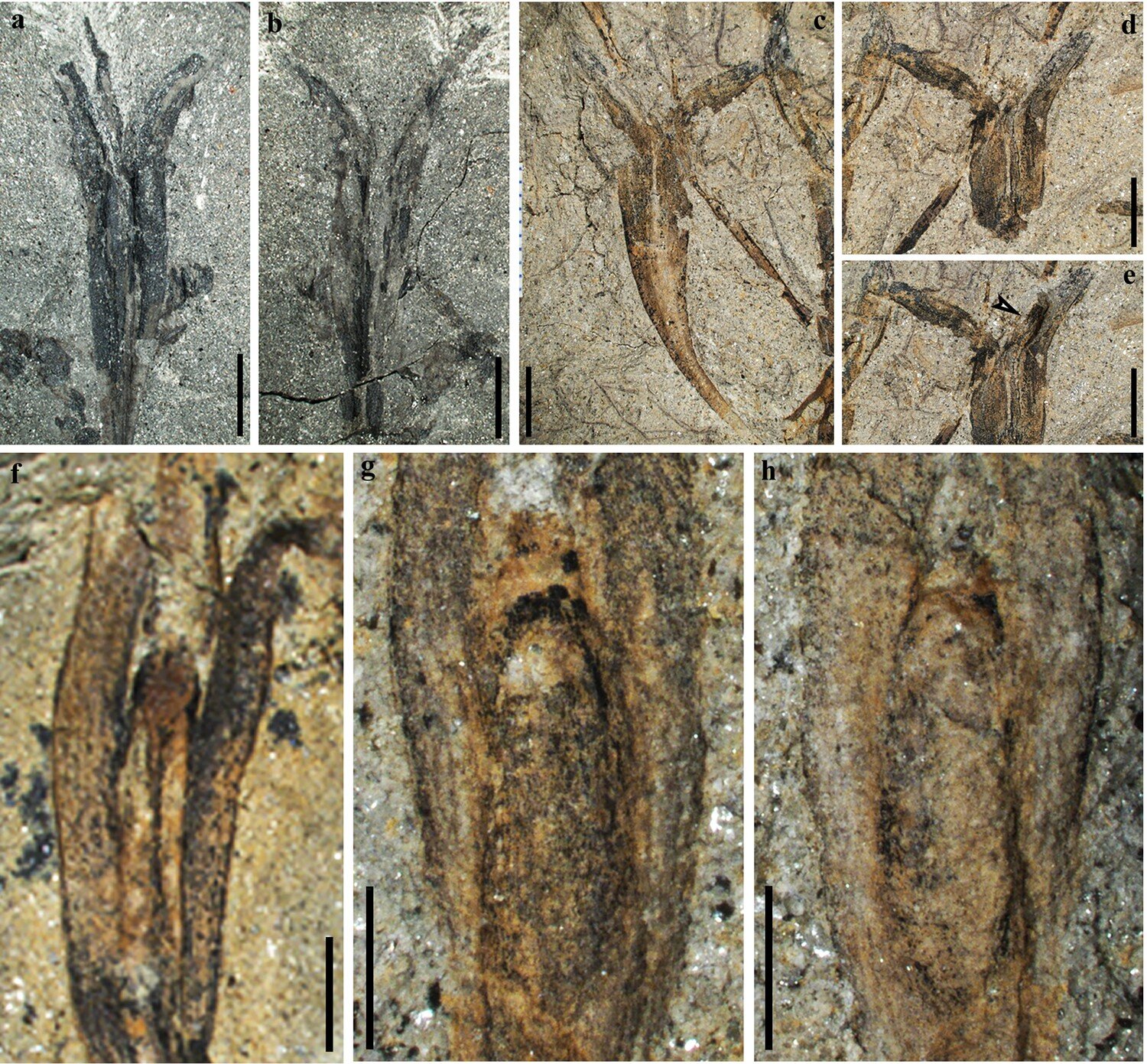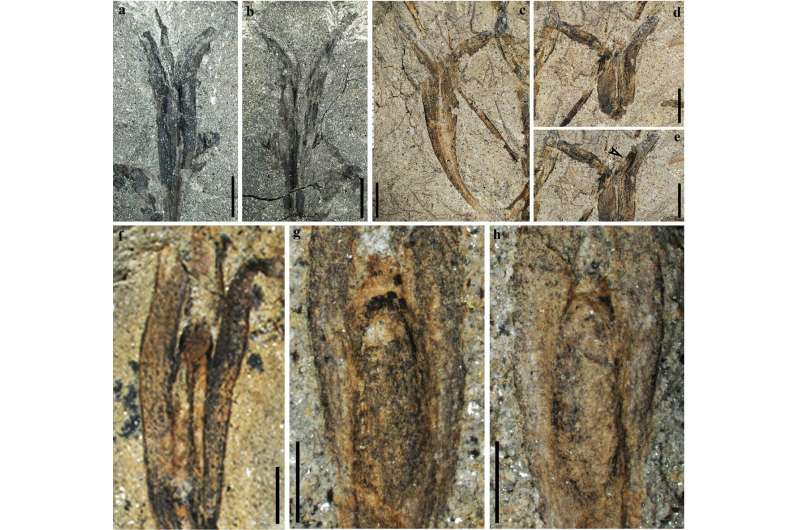

A team of geologists, life scientists and biologists affiliated with several institutions in China has found one of the earliest examples of a winged seed in a mine in Anhui Province. Their paper is published in the journal eLife.
Many plants have what are known as winged seeds, which have features shaped to take advantage of wind or the air—such shapes extend dispersal distances of seeds, allowing less competition between them. Common structures in such seeds allow for dropping through the air like a parachute or a helicopter in the wind.
Prior research has shown that the first seeds evolved approximately 372 to 359 million years ago, during the Famennian stage—a development that arose from earlier spore-based reproduction. The first such seeds were covered by a cupule and never evolved wings.
It was sometime later that the first wings began appearing—only two such plant groups are known to have developed wings during the Famennian—specifically, during the Late Devonian.
In this new effort, the research team wanted to learn more about the development of wind dispersal, and ventured to the Jianchuan mine in the Wutong Formation in the Anhui. Fossilized seeds had been found in the mine before.
While collecting samples in the mine, the team found some seeds they did not recognize, each 2.5 to 3.3 cm long, and without a cupule. Closer study of the seeds showed they were covered with integument, which, when folded back, gave way to three wing-like structures. They were able to date the seeds to 365 million years ago, making them the second-oldest winged seeds ever found. The team named the plant Alasemenia.
Intrigued by its number of wings, the research team compared the likely dispersal ability with other early winged seeds that had two or four wings and found they provided a more stable flight with faster spin, which they suggest likely gave it the ability to travel large distances when carried by the wind.
The team suggests their find adds to available information regarding the origins of wind dispersal of seeds.
More information:
Deming Wang et al, Alasemenia, the earliest ovule with three wings and without cupule, eLife (2024). DOI: 10.7554/eLife.92962.3
Journal information:
eLife
© 2024 Science X Network
Citation:
One of the earliest examples of a winged seed found in a mine in China (2024, October 13)
retrieved 13 October 2024
from https://phys.org/news/2024-10-earliest-examples-winged-seed-china.html
This document is subject to copyright. Apart from any fair dealing for the purpose of private study or research, no
part may be reproduced without the written permission. The content is provided for information purposes only.